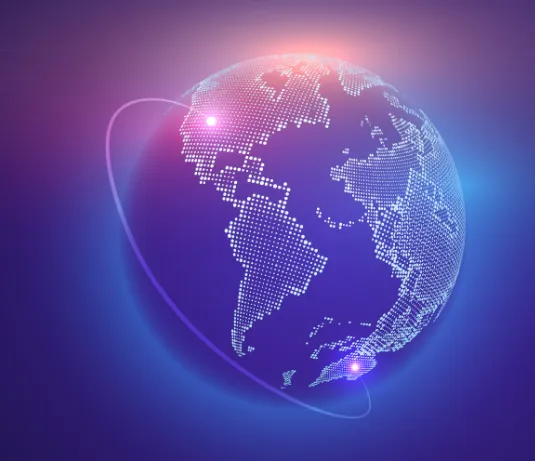In today’s hyper-connected digital world, depending on a single content delivery network (CDN) is often a gamble. Traffic surges, regional slowdowns, or even complete outages can disrupt the experience your users expect—fast, smooth, and always available. That’s why more organisations are embracing a multi-CDN strategy, distributing traffic across several providers to guarantee better speed, stronger reliability, and smarter cost control.
What Exactly is Multi-CDN?
A multi-CDN approach uses more than one content delivery network at the same time. Instead of letting just one provider deliver all your images, videos, scripts, and web assets, multiple CDNs are placed in play. Requests are then routed dynamically, so users are served content from the provider performing best at that moment.
Think of it as a digital safety net: if one provider struggles, another instantly takes over. This not only safeguards uptime but also ensures that content reaches audiences worldwide with minimal delay.
Why Businesses Are Moving to Multi-CDN
The shift to multi-CDN setups isn’t just about following a trend. Companies are making the move for very practical reasons:
- Global reach – A single CDN might be strong in Europe or North America, but weak in Asia or Africa. Combining providers ensures consistent coverage worldwide.
- Performance stability – Hardware failures, cyberattacks, or routing issues can drag down performance. Multi-CDN allows for real-time monitoring and automatic failover.
- Streaming without interruptions – For industries like sports broadcasting, e-learning, or live events, buffering can cost millions in lost engagement. Multi-CDN provides seamless adaptive delivery.
- Compliance and redundancy – Highly regulated industries, from healthcare to finance, often need geographic redundancy or strict data residency controls. Multiple CDNs make that possible.
Leading Multi-CDN Providers in 2025
Not all providers are created equal. Here are three standout players shaping the multi-CDN market this year:
1. IO River
IO River isn’t a CDN itself—it’s a controller built to simplify multi-CDN management. It functions as a programmable traffic router, directing users to whichever provider offers the best balance of speed, cost, and reliability in real-time.
Key strengths include:
- Automated routing based on latency, throughput, or custom rules.
- Compatibility with major CDN vendors such as Akamai, Cloudflare, Fastly, and Bunny.
- A unified analytics dashboard for cross-provider visibility.
- Programmable policies for region-based or content-based traffic steering.
- Failover capabilities that keep services running even during outages.
For teams that need control without the headache of juggling multiple dashboards, IO River provides an elegant solution.
2. Bunny CDN
Bunny CDN has built its reputation on offering high performance at a fraction of the cost of larger players. Known for being developer-friendly and budget-conscious, it’s particularly popular among startups, gaming companies, and mid-sized businesses.
Why Bunny stands out:
- More than 120 points of presence (PoPs) across North America, Europe, Asia, and Oceania.
- SmartEdge routing that directs users to the fastest available location.
- Detailed real-time analytics and request logs.
- Strong video support through Bunny Stream.
- Built-in origin storage zones for simpler deployment.
Affordable yet fast, Bunny proves that you don’t need a massive budget to achieve reliable global delivery.
3. Akamai
As one of the pioneers of CDN technology, Akamai remains a powerhouse with over two decades of experience. Its edge network is among the largest in the world, and it has evolved far beyond simple content delivery to become a full-scale edge computing and security platform.
Akamai’s advantages include:
- More than 4,000 PoPs in over 130 countries, ensuring unmatched global reach.
- Advanced edge compute capabilities through EdgeWorkers.
- Enterprise-grade security with built-in DDoS protection, bot management, and web application firewall (WAF).
- Real User Monitoring (RUM) to measure performance directly from end-users.
- Deep integration options tailored to large enterprises, governments, and regulated industries.
For global enterprises with mission-critical workloads, Akamai remains the gold standard.
Common Challenges in Multi-CDN Deployments
Despite its benefits, running multiple CDNs is not without hurdles. Here are some challenges teams often face:
- Complex configuration – Each provider has unique rules, APIs, and dashboards. Without a unifying controller, things can become messy.
- Cache discrepancies – Content may be stored differently across networks. Consistent cache headers and purge strategies are essential.
- SSL/TLS management – Certificates must remain valid across all providers, which can be tricky without automation.
- Log unification – Monitoring performance across multiple CDNs requires centralised analytics to get a full picture.
Best Practices for Multi-CDN Success
To truly benefit from a multi-CDN setup, companies need more than contracts—they need a smart operational strategy. Here are some proven best practices:
- Leverage Real User Monitoring (RUM): Pair synthetic testing with real-world user data to optimise routing decisions.
- Automate failover: Manual switching is too slow; use automation to reroute traffic within milliseconds.
- Watch costs closely: Some CDNs offer cheaper off-peak pricing. Programmable logic can route traffic cost-effectively.
- Test regularly: Simulate outages and spikes to make sure systems respond as intended before an actual crisis hits.
Final Thoughts
The digital economy of 2025 demands resilience, speed, and flexibility. A single CDN might work in the short term, but as businesses grow across borders and user expectations rise, multi-CDN strategies are quickly becoming essential.
Providers like IO River, Bunny CDN, and Akamai are at the forefront of this shift—each serving different needs, from cost-conscious startups to global enterprises. By choosing the right mix and applying smart orchestration, companies can deliver faster, more reliable experiences to their users while staying agile in a competitive market.







